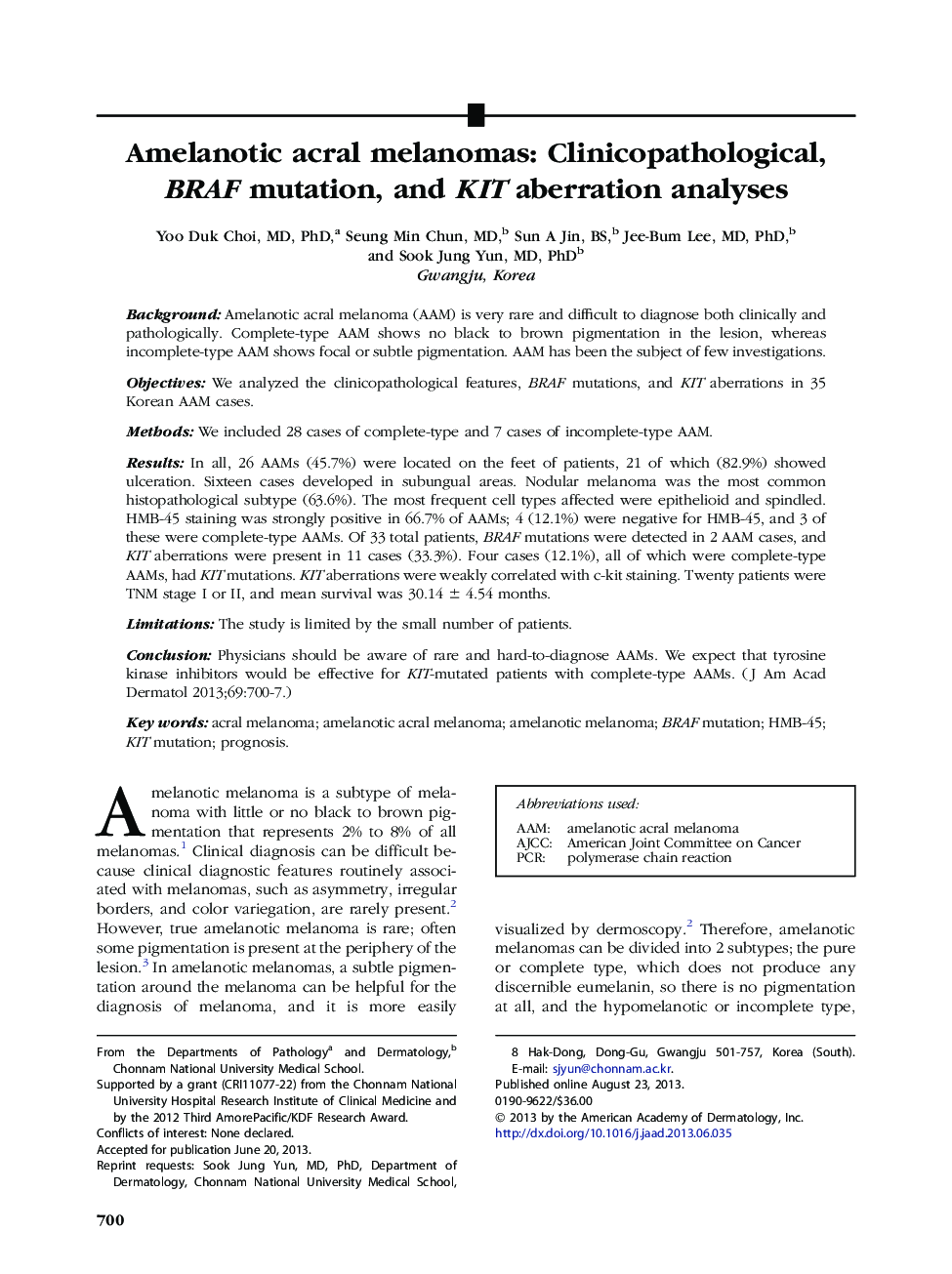| Article ID | Journal | Published Year | Pages | File Type |
|---|---|---|---|---|
| 3205313 | Journal of the American Academy of Dermatology | 2013 | 8 Pages |
BackgroundAmelanotic acral melanoma (AAM) is very rare and difficult to diagnose both clinically and pathologically. Complete-type AAM shows no black to brown pigmentation in the lesion, whereas incomplete-type AAM shows focal or subtle pigmentation. AAM has been the subject of few investigations.ObjectivesWe analyzed the clinicopathological features, BRAF mutations, and KIT aberrations in 35 Korean AAM cases.MethodsWe included 28 cases of complete-type and 7 cases of incomplete-type AAM.ResultsIn all, 26 AAMs (45.7%) were located on the feet of patients, 21 of which (82.9%) showed ulceration. Sixteen cases developed in subungual areas. Nodular melanoma was the most common histopathological subtype (63.6%). The most frequent cell types affected were epithelioid and spindled. HMB-45 staining was strongly positive in 66.7% of AAMs; 4 (12.1%) were negative for HMB-45, and 3 of these were complete-type AAMs. Of 33 total patients, BRAF mutations were detected in 2 AAM cases, and KIT aberrations were present in 11 cases (33.3%). Four cases (12.1%), all of which were complete-type AAMs, had KIT mutations. KIT aberrations were weakly correlated with c-kit staining. Twenty patients were TNM stage I or II, and mean survival was 30.14 ± 4.54 months.LimitationsThe study is limited by the small number of patients.ConclusionPhysicians should be aware of rare and hard-to-diagnose AAMs. We expect that tyrosine kinase inhibitors would be effective for KIT-mutated patients with complete-type AAMs.
